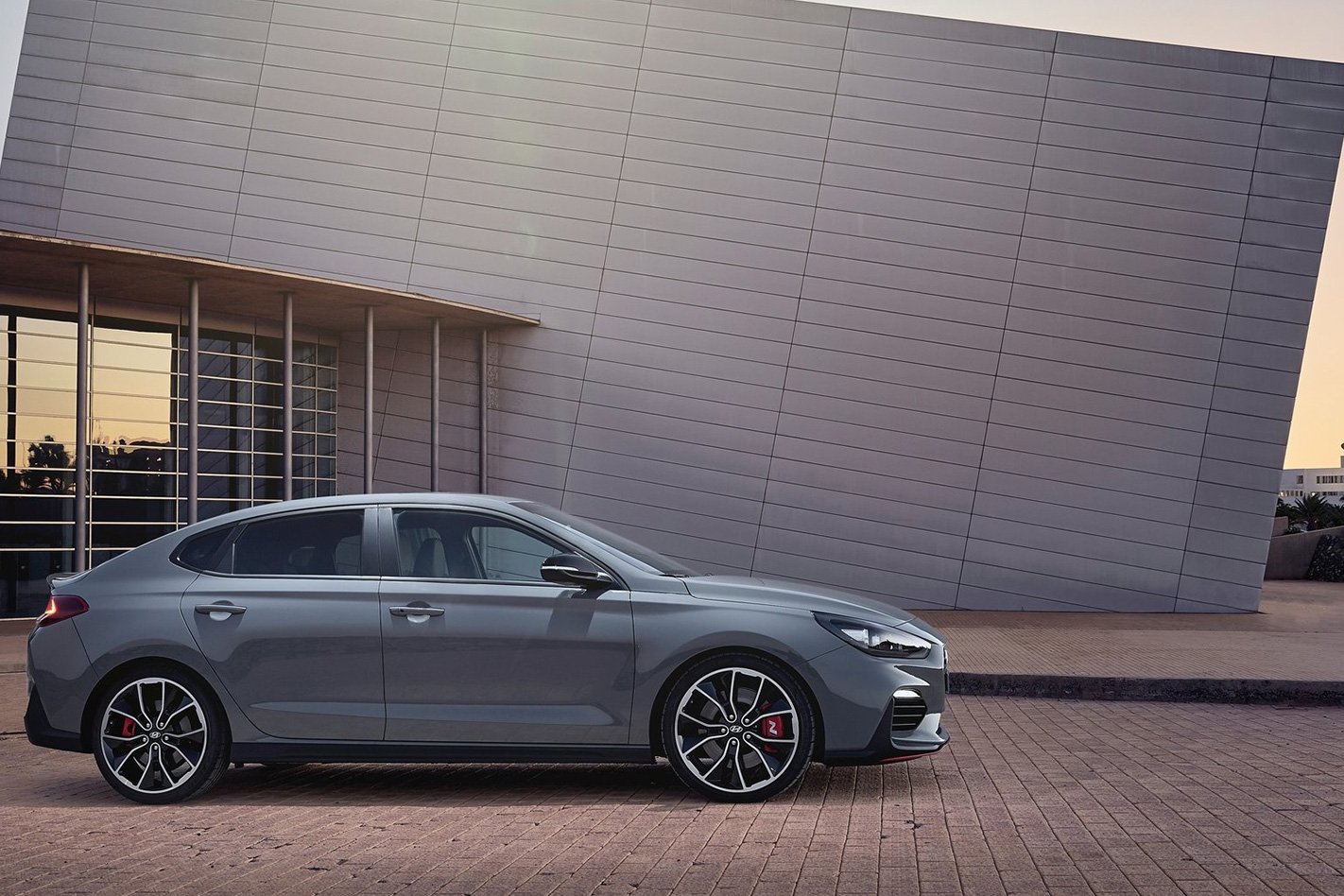WHAT IS IT?
Hyundai’s brilliant i30 N hot hatch repackaged in a more sophisticated body.

WHY ARE WE DRIVING IT?
The i30 N saw off the Renaultsport Megane in our twin-test last year. Can that dynamic fairy dust transfer to the larger, more grown-up Fastback?

MAIN RIVALS
Renault Megane RS, Golf GTI, Mercedes-AMG CLA 45
THE WHEELS REVIEW
LATE last year, Wheels gave the Hyundai i30 N the nod over the benchmark Megane RS. Not bad for the Koreans’ first proper hot hatch. Now comes the follow-up: the i30 Fastback N. Essentially it takes the hatchback, drops the roof 21mm and flows it into a tail some 120mm longer. It’s like the relationship between the Mercedes-AMG CLA 45 and A45 hatch, only the Fastback is much cheaper and still a hatch. Aussie pricing is tbc, but European pricelists suggest it’ll be under 2 per cent more expensive the hatch, probably a shade under $41k.

The Fastback might look more sensible, but it hasn’t lost its puckish fun because the important stuff remains much the same, namely a 202kW 2.0-litre turbo engine, slick-shifting manual gearbox and a front-drive platform with multi-link rear suspension. There is 12kg extra over the rear wheels, and minor tinkering to chassis settings, namely 5% softer front springs, slightly less aggressive bump stops, 0.8mm thinner front anti-roll bar, and a new rear camber-control bar. Don’t think this positions the Fastback as a softer kind of proposition, though, because the changes will soon carry over to the hatchback.
Perhaps the steering feels a tad lighter (it’s still weighty), the suspension slightly less gnarly (it’s still firm), but fundamentally this remains an excellent steer. On a road that tumbles next to the Atlantic on the Gran Canarian press launch, the Fastback is in its element. Chunkily precise steering, keen brake feel and front tyres that suck themselves to the road surface give you confidence to attack corners hard, but while it /is/ stable, you’ve also got options to lift the throttle and move the rear end around in corners – it feels fluid and engaging on asphalt like this.

Plentiful power means you can exploit the balance, and the 2.0-litre’s delivery always feels juicy and willing, whether it’s boosting from 2000rpm or revving past 6000rpm. More power wouldn’t hurt, except there’s already some torque steer and scrabble under heavy throttle from hairpins.
Other de-merits include – nicely comfortable and supportive – sports seats that perch you up like a toddler at mealtime, and wide brake and throttle spacing to stop grandma confusing the pedals rather than encourage heel-and-toe.

You might choose the Fastback because it offers 55 litres extra luggage capacity and looks more mature than the hatch, or not because following traffic is less easily seen through the steeply raked rear screen, and those over six feet might grumble about rear headroom. Otherwise, choosing between i30Ns is really down to personal preference rather than one being markedly superior. For us, it’s the hatchback body that best bottles the i30N’s youthful energy.

THE WHEELS VERDICT
Hyundai’s Fastback body broadens the i30 N’s appeal to a more mature market for very little extra outlay, but does nothing to diminish its driving appeal – this is still a high-performance car to give the Megane RS a wobble, and with attitude to make a Golf GTI seem bland. Slightly reduced rear visibility and less headroom for really tall rear-seat passengers are the only negatives of the curvier body style, and neither should prove deal-breakers in this segment.
PLUS: Precise steering, responsive turbo engine, body control, strong front-grip, throttle-adjustable balance, brake feel MINUS: Chasm between throttle and brake pedals, command driving position, cheap plastics, rear visibility

SPECS
Model: Hyundai i30 Fastback N Engine: 1998cc 4-cyl turbo, dohc, 16v Max power: 202kW @ 6000rpm Max torque: 353Nm @ 1500rpm Transmission: 6-speed manual, front-wheel drive Weight: From 1429kg 0-100km/h: 6.1 sec Economy: 6.9/100km Price: Sub $41,000 (est) On sale: 2019





